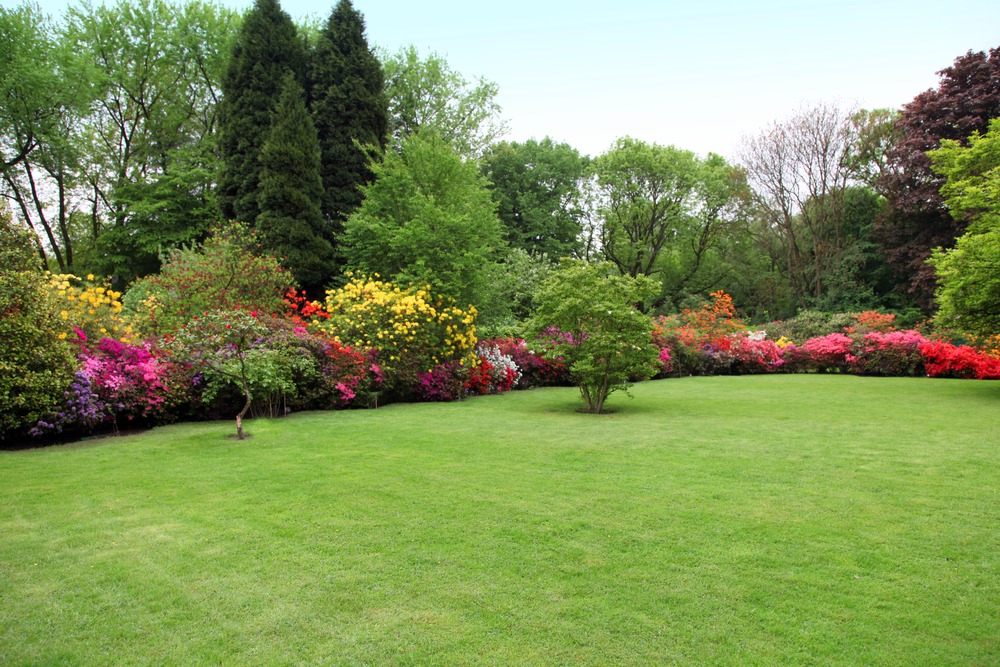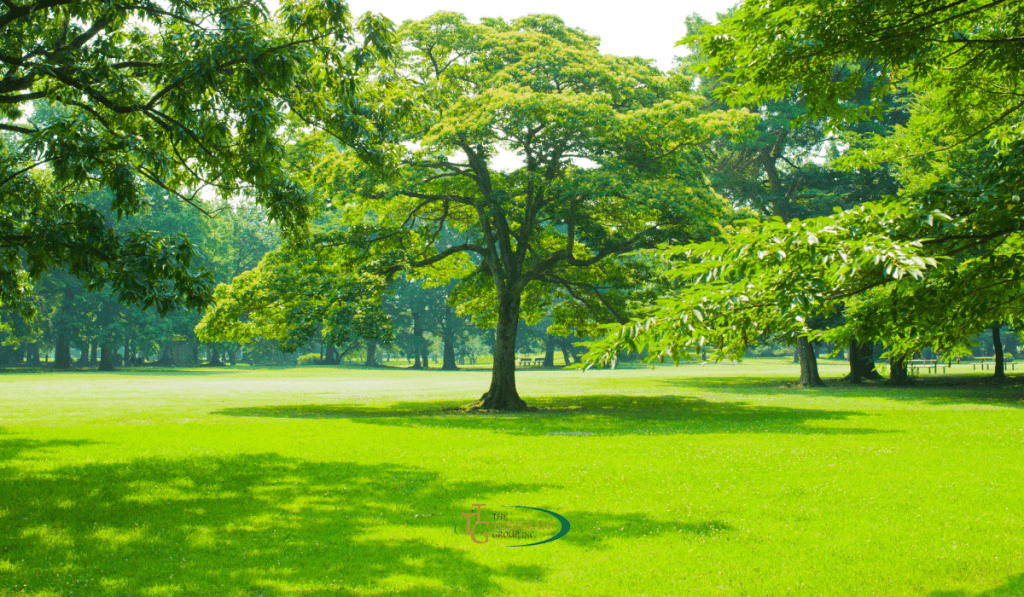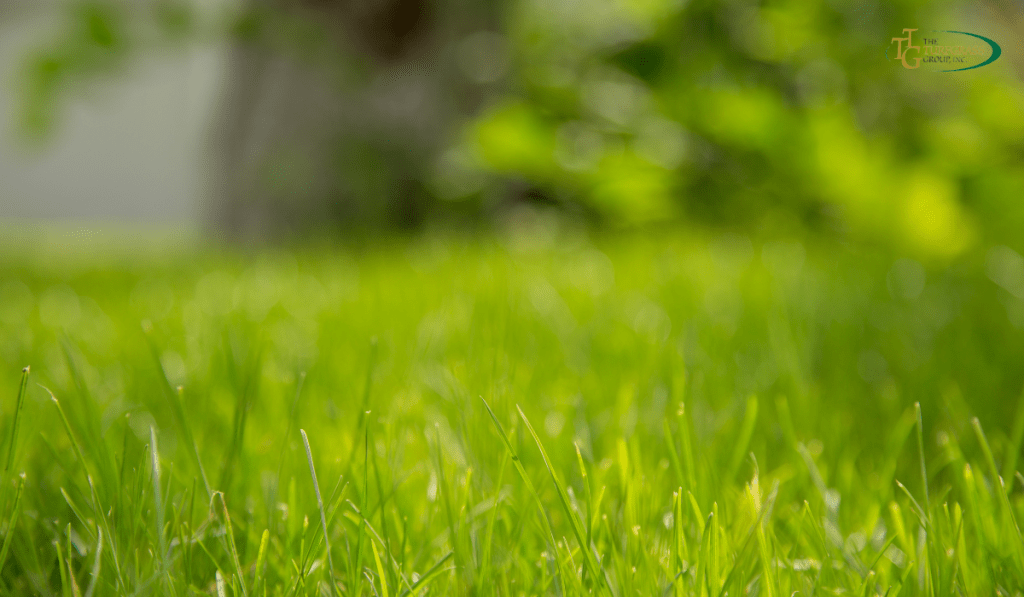
Mow Your Lawn with This Quick Tip to Help Your Lawn Look its Best
When mowing your lawn, the height at which you cut the grass can significantly impact its overall health and appearance. Unfortunately, many people make the mistake of cutting their grass too short, thinking a closer cut will result in a neater look. However, this practice can be detrimental to the well-being of your lawn.
How You Mow Your Lawn Matters
Understanding how grass grows can help you make informed decisions regarding lawn maintenance. Grass blades are the solar panels of your lawn, absorbing sunlight and converting it into energy through photosynthesis. When you mow your lawn too short, you remove a significant portion of the grass blades, limiting their ability to capture sunlight and produce energy. This can weaken the grass & make it more susceptible to diseases, weeds, and drought.
How Grass Grows
Grass grows from the base of the plant, known as the crown. The crown produces new shoots, which eventually develop into grass blades. When you mow your lawn, leaving enough of the grass blade intact is crucial to support healthy growth. Following the quick tip, we’re about to share, you can ensure your lawn receives the nourishment it needs to thrive.
Different Mowing Patterns to Try
To implement this quick tip, you can vary your mowing patterns each time you cut the grass. Try alternating your mowing pattern instead of mowing in the same direction every time. For example, if you mowed your lawn horizontally last time, cut it vertically or diagonally this time. Changing the direction helps prevent the grass from developing a “grain” and encourages upright growth.
Mowing Patterns and Height Based on Turf Variety

The ideal mowing height and frequency can vary depending on your grass type. Different turf varieties have other growth habits and tolerances. Generally, it’s recommended to mow cool-season grasses, such as Kentucky bluegrass and fescue, at a height of around 2.5 to 3.5 inches. Warm-season grasses, like Bermuda grass and Zoysia grass, can be mowed shorter, about 1.5 to 2.5 inches.
Bottom Line on this Quick Tip to Help Your Lawn
Mowing your lawn at the proper height & alternating your mowing patterns, you can help your property look its best. This quick tip promotes healthy growth, encourages lush greenery, and minimizes the risk of lawn problems. Adjust the mowing height based on your turf variety, and always use a sharp mower blade for clean cuts. With this simple approach, you’ll be well on your way to a beautiful and well-maintained lawn.
FAQs
How often should I mow my lawn to maintain its appearance?
To maintain the appearance of your lawn, the mowing frequency depends on the growth rate of your grass. As a general guideline, it’s recommended to mow cool-season grasses when they reach a height of about 3 to 4 inches and warm-season grasses when they reach the size of about 1.5 to 2.5 inches.
What are some common mistakes people make when watering their lawns?
Some common mistakes when watering lawns include overwatering, shallow watering, and moisturizing at the wrong time of day. Overwatering can lead to external root growth and increase the risk of diseases. Shallow watering doesn’t penetrate deep enough into the soil, leading to weak roots. Watering during the hottest part of the day can result in excessive evaporation.
Is there a specific type of fertilizer that works best for improving the health of my lawn?
The best type of fertilizer for your lawn depends on the nutrient needs of your specific turfgrass and soil conditions. Conducting a soil test can help determine the proper fertilizer formulation. In general, balanced fertilizers with a ratio of nitrogen (N), phosphorus (P), and potassium (K), like 10-10-10 or 20-10-10, can provide essential nutrients for overall lawn health.
How can I effectively control and prevent weed growth in my lawn?
To control and prevent weed growth, maintain a healthy lawn by following proper mowing, watering, and fertilization practices. Regularly remove weeds manually or use appropriate herbicides. Additionally, overseeding your property can help fill thin areas and reduce weed competition.
Are there any specific techniques or tools I should use when aerating my lawn?
Aerating your lawn can improve soil compaction and enhance the flow of air, water, and nutrients to the grassroots. There are two primary types of aerators: spike aerators and plug aerators. Plug aerators, which remove minuscule plugs of soil, are generally more effective. Renting or purchasing a plug aerator and following the manufacturer’s instructions can help you aerate your lawn effectively.
What are some natural methods for dealing with pests that may damage my lawn?
Some natural methods for dealing with lawn pests include promoting a healthy lawn through proper maintenance practices, encouraging beneficial insects that prey on pests, using organic pest control products, and employing cultural techniques such as proper watering and mowing heights. In addition, removing thatch buildup can discourage pests and allow for better air circulation.
How can I determine if my lawn needs additional nutrients or amendments?
A soil test is the best way to determine if your lawn needs additional nutrients or amendments. It provides valuable information about the soil’s pH level, nutrient content, and organic matter. You can identify deficiencies by analyzing the test results and adjusting your fertilization and amendment practices accordingly.
Are there any specific steps I should follow when overseeding my lawn?

When overseeding your lawn, follow these steps for best results: first, prepare the soil by removing and loosening debris. Next, spread the seed evenly using a spreader or by hand. Rake lightly to ensure good seed-to-soil contact. Next, water the area regularly to keep it moist but not saturated. Finally, follow proper care practices to support the germination and establishment of the new grass.
What are the signs that my lawn is being affected by a disease, and how can I address it?
Signs that a disease may affect your lawn include discolored patches, thinning grass, wilting, or unusual fungal growth. To address lawn diseases, proper identification is crucial. Please consult with a local gardening expert or extension service to identify the specific condition and follow their treatment recommendations, which may include cultural practices, fungicides, or other control measures.
Are there any alternative options to traditional grass lawns that require less maintenance?
Yes, alternative options to traditional grass lawns require less maintenance. Some popular alternatives include ground covers like clover or creeping thyme, ornamental grasses, native plants, and low-maintenance turfgrass varieties such as fine fescues. These options often require less water, fertilizer, and mowing than traditional lawns and can provide unique aesthetic appeal.